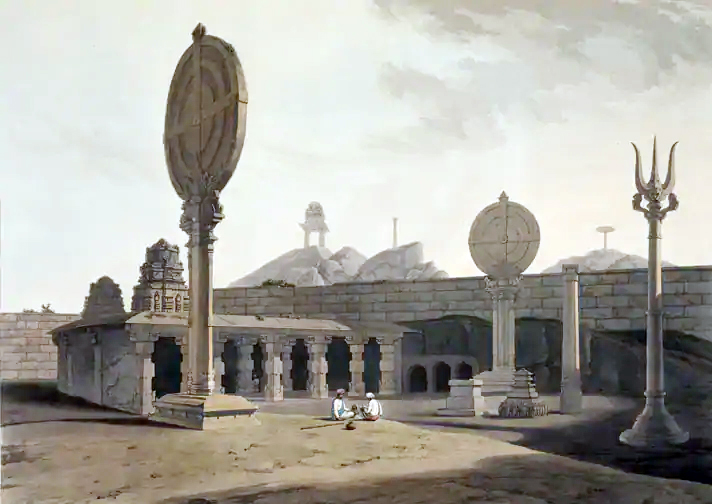Gavi Gangadhareshwara Temple: Karnataka | 16 Jan 2021
Why in News
The overclouded sky impacted the annual phenomenon called Surya Majjana in Gavi Gangadhareshwara Temple (Karnataka).
Key Points
- Location: This temple is located in Bengaluru, Karnataka.
- Meaning of the Name:
- The temple derives its name from the combination of topographical features and mythology: gavi (cave), and Gangadhareswara (shiva) means the Lord who adorns the Ganga.
- Establishment:
- It is believed to have been built by Kempe Gowda I in its present form.
- Architecture Features:
- Celestial Oriented Architecture: Built in Vijaynagar style, it has unique celestial oriented rock cut architecture due to which Surya majjana occurs on Sankranti every year.
- Surya Majjana:
- Every year on the Makar Sankranti, the sun rays fall on the Shiv linga located in the cave (gavi) making it shine for ten minutes.
- Surya Majjana:
- Two Monolithic Structures:
- In the forecourt stand two monolithic structures, named Suryapana and Chandrapana - each consisting of a massive disc atop a supporting pillar.
- They have engravings of sitting bulls on the discs face each other.
- Iconography of Shiva:
- The compound of the temple is adorned with monolith structures associated with the iconography of Shiva - the trishula (trident) and the damaru (an hourglass-shaped, two-headed drum).
- In between the two discs there is a brass dhwajasthambha (flagstaff), and a small cubicle housing a statue of Nandi, Shiva’s bull carrier.
- Celestial Oriented Architecture: Built in Vijaynagar style, it has unique celestial oriented rock cut architecture due to which Surya majjana occurs on Sankranti every year.
Kempe Gowda I
- Kempe Gowda I was a feudatory king under Vijayanagar empire.
- He founded the city of Bengaluru in 1537 and named it after their family deity’s consort, Kempamma.
- He is also credited with the construction of several lakes or keres for the purposes of drinking water and irrigation eg. the Dharmambudhi lake.
Other Sites in Karnataka
- Basavakalyan,
- Hampi (World Heritage Site),
- Badami,
- Aihole, etc.

